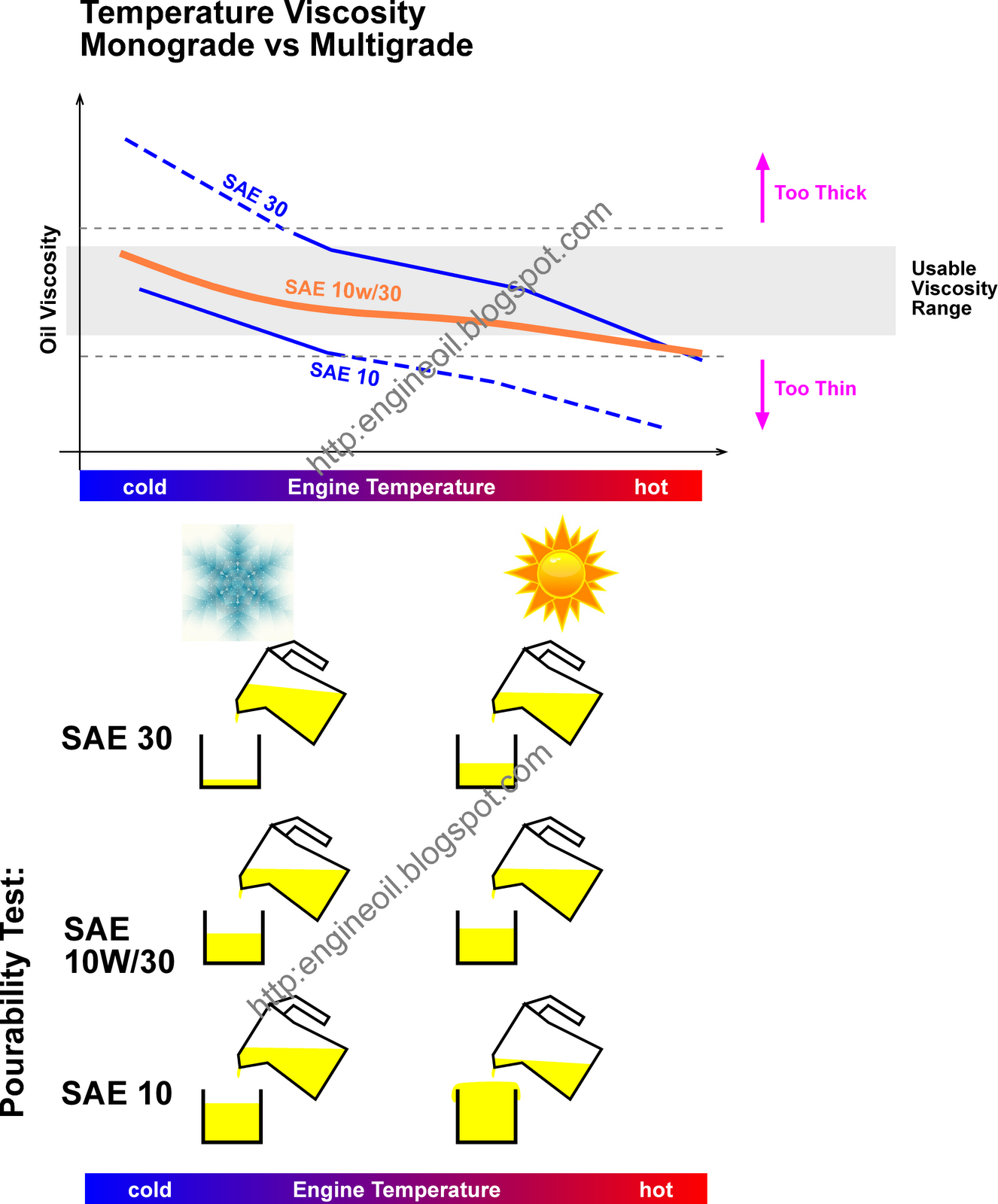

This will cause rapid wear of bearings, piston/ring scuffing, seizure, and other critical problems. If viscosity is too low, it’s far more dangerous: oil will flow away too easily and won’t build sufficient pressure. However, using thicker than recommended oil isn’t fatal: after all, this happens each time you start a cool engine. If viscosity is too high, it isn’t good: oil may fail to arrive in time and drive away heat quickly enough. To guarantee adequate lubrication of bearings under such harsh conditions, SAE J300 defines the minimum HTHS viscosity for each viscosity grade. Finally, under high engine load, the oil temperature in bearings may increase to 150-200oC, and at the same time, very high shear forces tend to shred oil molecules into smaller fragments. That’s why SAE J300 also list CCS and low-temperature pumpability. If this happens, you won’t be able to crank your engine. As temperature drops, motor oil is getting more and more viscous, eventually turning into a soap-like solid substance.

However, you should also be able to start your car in winter. Oil flow through the oil channels – or galleries – in the engine is largely determined by its kinematic viscosity, that’s why KV100 is the first thing to look at when choosing the right oil. For oil to do its job, it has to be timely delivered to the critical lubrication points. Any incidence of unlubricated metal-metal contact may have catastrophic consequences and has to be avoided at any cost. In a firing engine, all moving parts ride on an oil film. Oil viscosity is one important quantifier of its fitness for purpose. Hence, one can firmly state that viscosity does matter! In fact, SAE J300 specifies four different types of viscosity: kinematic viscosity at 100oC (KV100), maximum permissible viscosity for cold cranking (CCS) and cold temperature pumpability, and high-temperature high-shear (HTHS) viscosity. The latest SAE J300 specification was adopted in 2015. Ever since - even nowadays - motor oils are still sometimes referred by weight, although oil viscosity began to be used as the basis for all future SAE specifications since 1923. More viscous oils were “heavier” and had higher flash and fire points. That first SAE classification – the so-called Specification No 26 – ranked motor oils based on specific gravity, flash and fire points. In fact, it was already in 1911 that the first classification of motor oils was adopted by the newly founded Society of Automotive Engineers (SAE). Since the internal combustion engine is so critically dependent on oil, the need for standardization of motor oil was quickly realized. However, the first true mass-produced automobile, the famous Ford Model T launched in 1908, already used a splash oiling system which is conceptually similar to what we see in modern cars, except that both the engine and the transmission of Model T shared the same oil. Benz Patent Motor Car, which was outed to the public in 1886 and is usually regarded as the first production vehicle powered by a four-stroke internal combustion engine, used a rather alien drip-feed lubrication and a grease cup.

This fact was understood already at the very beginning of over the century-long history of the automobile. Motor oil is a vital part of the internal combustion engine.


 0 kommentar(er)
0 kommentar(er)
